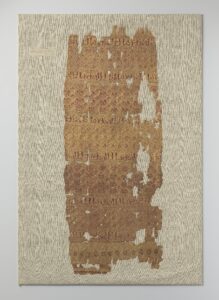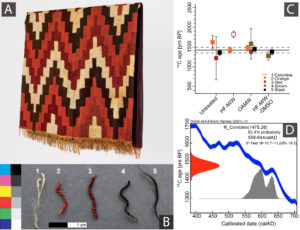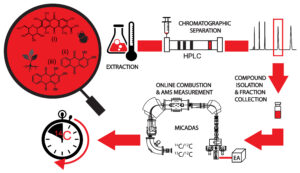Category
Textiles
Start
2023
Status
Active
Acronym
14Colours
Natural organic dyes have been used for millennia to colour historical textiles. Their identification by advanced chromatographic techniques may support geographic and historical appropriateness; but limited chronological information is gained as natural dyes have been used since Antiquity up to today. More precise constraints on the date of creation can be provided by radiocarbon (14C) dating, yet no such analysis has ever been conducted on colourants. To date, only the substrate or textile is radiocarbon dated, owing to size requirement.
This proposal aims to develop a new protocol for assessing the provenance and date of historical textiles by combining dye analysis with ultra-high performance liquid chromatography, and compound-specific radiocarbon analysis (CSRA). An extraction method will be developed to achieve efficient analytical response, while ensuring minimal sample sizes. As proof of concept, this approach will be applied for the analysis of both red dyes and fibre substrates in a small group of historical textiles, which origins were attributed in the past by art historians, based on their style and construction. The results obtained will bring valuable information that supports the art historical interpretations, while also demonstrating the potential of the developed methodology for future date determinations in historical objects.

Tiraz fragment, Egypt, 1100-1299, inv. nr. BK-NM-12149.


CSRA strategy workflow targeting anthraquinone based dyestuffs.

(A) Tunic, Nazca culture, purportedly 100 BCE – 600 AD (B) Sampled material (C) Radiocarbon age spread for tested extraction methods (D) Mean 14C age of all samples calibrated against Intcal20 calibration curve (blue)